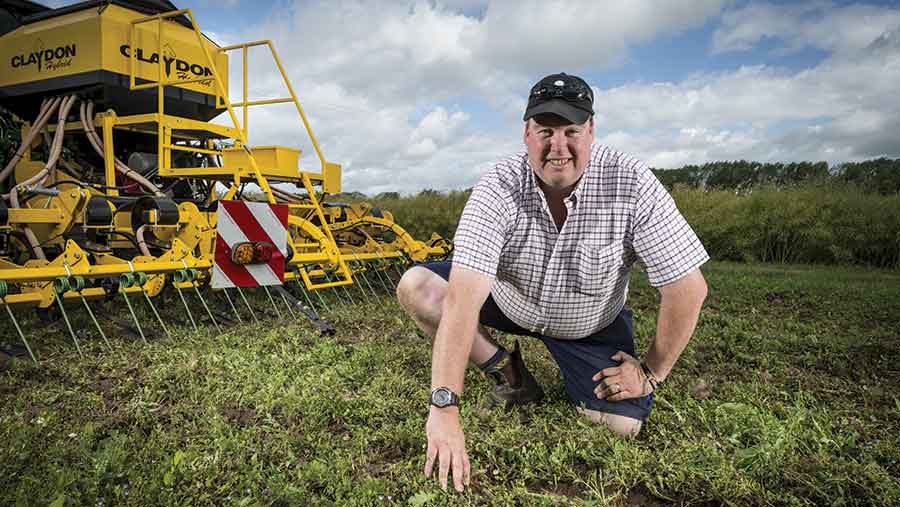Variable-depth cultivations may deliver cost savings
 Graham Potter
© Jim Varney
Graham Potter
© Jim Varney It is not just variable-rate growth regulators growing in popularity with farmers looking to better target inputs – altering the depth of cultivations is also being touted as the next step in precision farming.
Graham Potter, who farms near Thirsk, North Yorkshire, is pioneering the use of variable-depth subsoiling across his 200ha of cropping.
With about 20 different soil types, ranging from sands to heavy clay, Mr Potter believes variable cultivation depth is a logical next step for his RTK-based controlled-traffic and Claydon direct-drilling system.
See also: How to manage soil-mapping data
“Our land naturally compacts and although we try to minimise ground disturbance, we have found better yields from loosening once every four years by subsoiling after oilseed rape.”
But depth of compaction varies given the different soils, so to target cultivations and save fuel, wearing parts and money, he looked to variable depths.
Soil zone maps based on conductivity tests and field digs were produced and Mr Potter uses Gatekeeper to convert these into a cultivation plan, which is uploaded to his John Deere Greenstar and Bogballe cultivator control box (as used on KRM spreaders).
Depth on the 3.5m, five-leg Plowman Brothers Omni-Lift subsoiler is varied by automatically raising or lowering the rear packer roller.
Sandy soils are prone to deeper compaction, so maximum cultivation depth of the low-disturbance tines is typically 400mm. Compaction is usually closer to the surface on heavy clays where maximum depth is 270mm. Average depth is 315-320mm, he says.
“We saw a good fuel saving last year, but it was only a small trial at the end of the season. This autumn will be the big test.”
James Kelsey of Plowman Brothers says top-link geometry generally determines the amount of auto-depth variation possible for mounted cultivators. “Generally it’s plus or minus 50mm either side of the average depth, but it could be more if you change top-link geometry.
“In theory, trailed machines could have much greater range of say 150-200mm.”
Real-time data transfer is an added bonus of such systems as it helps make accurate management decisions, he adds.

